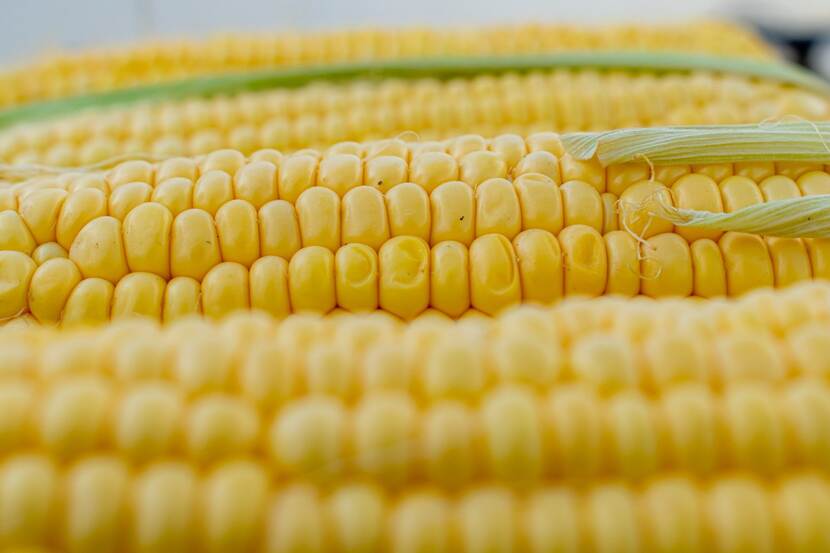Hungary Newsflash Week 39
Soaring corn yields, consumer price increase, agro policy updates, artificial cattle breeding - The week in Hungarian agriculture

Hungary’s a-maize-ing corn harvest
In recent years, Hungary’s total sweet corn harvest routinely went above annual yields of 500 thousand tons and while this year’s heavy rainy period in May and June was not favorable for corn cultivation, experts still expect high yields that will probably hit the 500-thousand-ton mark again. Most of the domestic produce is used as an ingredient in preservation in the canning and refrigeration sectors, and only a smaller portion of it goes to human consumption. Annually, Hungarians only eat 1-1.5 kg corn per capita.
However, with the recent sunny summers and the crop’s adaptability to the changing Pannonian climate, maize has been growing in production in recent years. The total maize production in Hungary accounts for more than a million hectares of farmland and in 2019, it increased by 9.4%, reaching a harvest yield of 8.3 million tons. With a net export worth of $627, Hungary was the world’s 8th largest corn exporter after Romania in 2019, with the primary foreign importers of Hungarian corn being Germany, the UK, France, Poland and Italy.
The consumer prices of agro products continue to rise
According to the latest figures for the first six months of 2020 by the Central Statistical Office of Hungary, the consumer prices of agricultural food products continued their seven-year increase trend this year, although the trend slowed down – While in the first six months of 2019, the consumer price increase was 8.9%, the 2020 figure was only 6.5%. Agricultural specialist Zoltán Fórián of Erste Bank’s Agro Competence Center explained in an article on the news portal Magyar Mezőgazdaság that an important factor for food price increase this year was the shopping spree following the start of the pandemic in Europe, but after an 8.7% spike in April, the trend returned to 7.8-8.4% in the following months.
The Agro Competence Center projects that the price increase will continue to slow throughout the rest of 2020, with a mean 7% in aggregate consumer prices and 6% in the price of agricultural products. The latter was mainly driven by the price increase of animal products in the first six months (8.9%), while the mean figure for plant products was lower (5.2%). The highest peaks were pork meat (20-24%) and fruits (almost 50% in some cases.) The last fruit harvests, apple, pear and plum are now under way however, so neither the weather nor pandemic shocks to the labor supply are expected to change fruit prices in a major way in the remainder of the season.
The main drivers for the increase of prices are plant protection materials and livestock medicine costs, while other factors, like dropping fuel prices or the cost of fertilizers temper the price increase dynamics.
Centralization of food chain safety
Starting October 1, the food chain safety authorities in Hungary will be headed by National Chief Veterinarian Dr. Lajos Bognár, which will bring them under the direct supervision of the Minister for Agriculture. According to Minister Nagy, the complexity of the food chain is unfathomable to an outside observer and the pandemic crisis proved that the domestic food chain is secure but also that the food supply is of strategic importance, making the safety of the food supply a matter of national security.
The Minister also added that in these times of economic challenges, the food supply chain also has to deal with challenges like the African Swine Fever epidemic, or the recent Avian Influenza outbreak, which is why the new structure will be “quicker and more efficient”.

National aquaculture plans underway
Deputy State Secretary for Forestry Sándor Szentpétervári stated at the 44th Fisheries Scientific Council that currently there is preliminary work underway for a 2021-2027 National Aquaculture Strategic Plan for Hungary.
The Deputy State Secretary highlighted that the new strategy will put more emphasis on economically friendly solutions, ecosystem services, climate neutrality and biodiversity, however, competitiveness will remain a cornerstone. Policy planners are currently investigating the Commission’s guidelines on sustainable aquaculture, as well as the EU’s Green Deal documents, the “Farm to Fork” and biodiversity strategies, which will make the basis of the new policy framework.
First artificially inseminated calves in Hungary
The first artificially inseminated cattle calves in Hungary were born in August, announced Szent István University (SZIE) in a recent press release. Researchers at the university’s embryo center at the Kaposvár Campus were successful in artificially inseminating the embryos through in vitro fertilization and planting them in the donor cow.
Researchers from SZIE and the Budapest University of Technology and Economics have been working together for years in the research of in vivo assisted embryo implantation technologies that can be employed in heat stress periods, however, taking opportunity of the state-of-the-art on-site research infrastructure, they also started researching in vitro artificial insemination. As a result, they managed to successfully implant the first in vitro cattle embryos which were born in August at a facility run by Lasjkomáromi Zrt, the Kaposvár Campus’s partner company. The three calves are from the murraygrey variety, have been christened Cili Campus, Csongor Campus and Csanád Campus.
Photo credit:
"Jam" by Michal Jarmoluk via Pixabay
"Corn on the cob by Cornell Frühauf via Pixabay